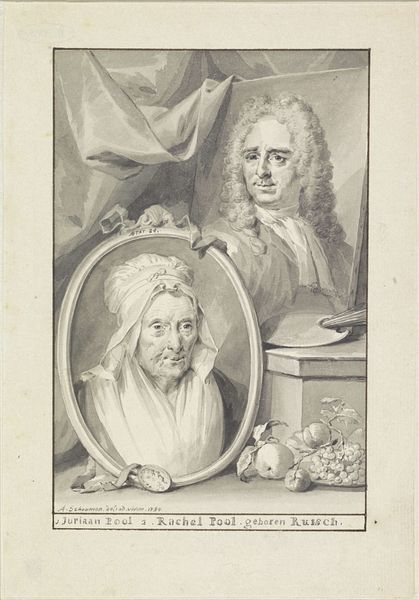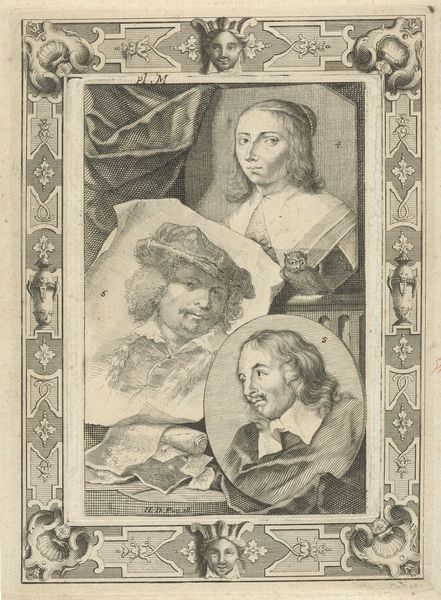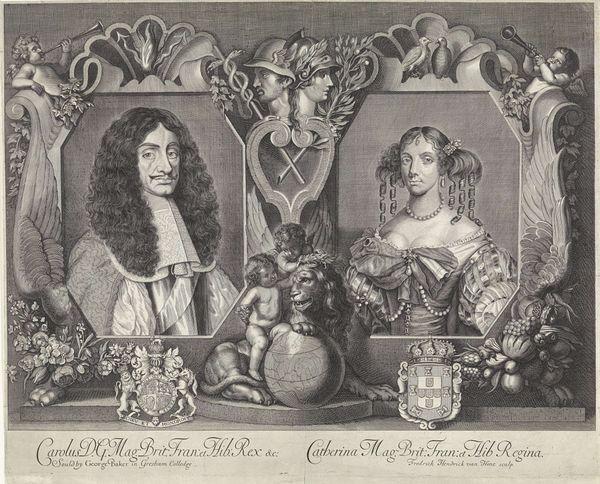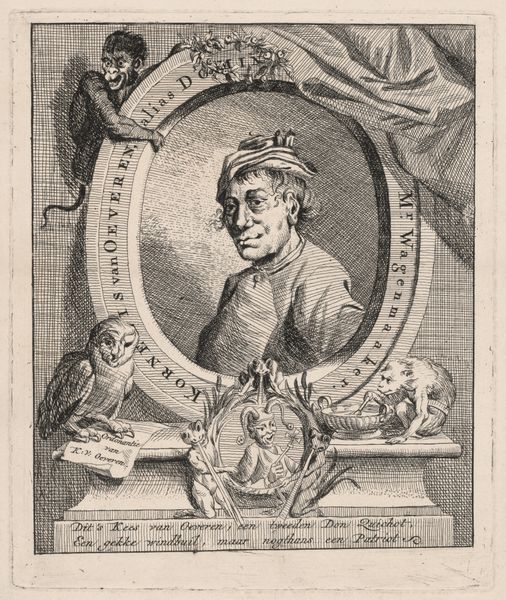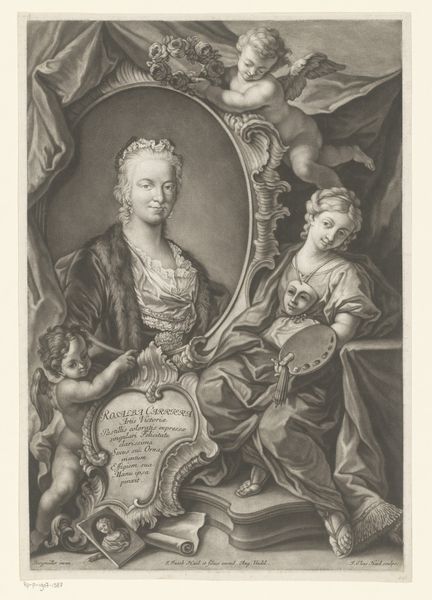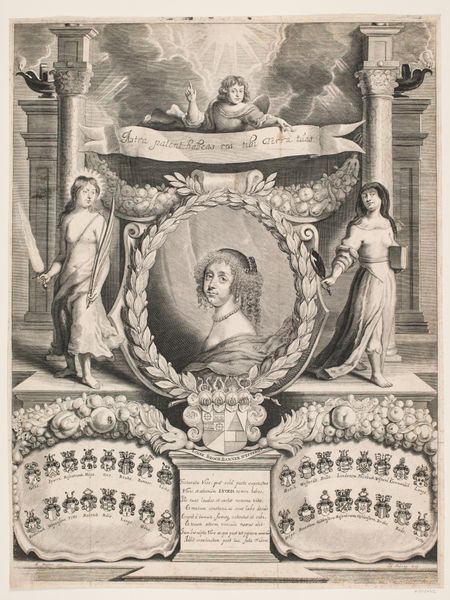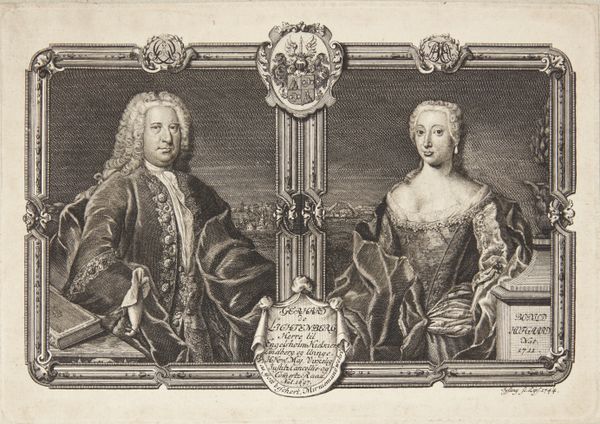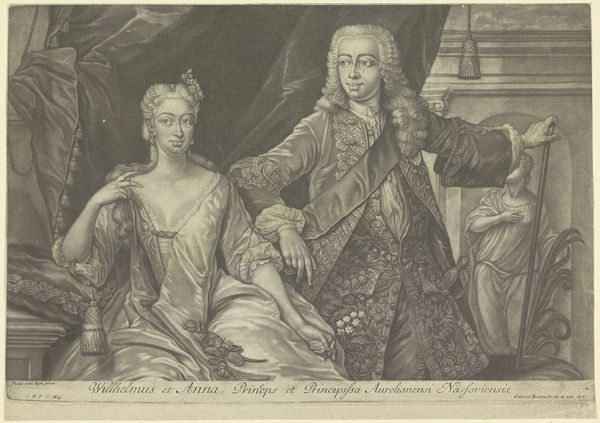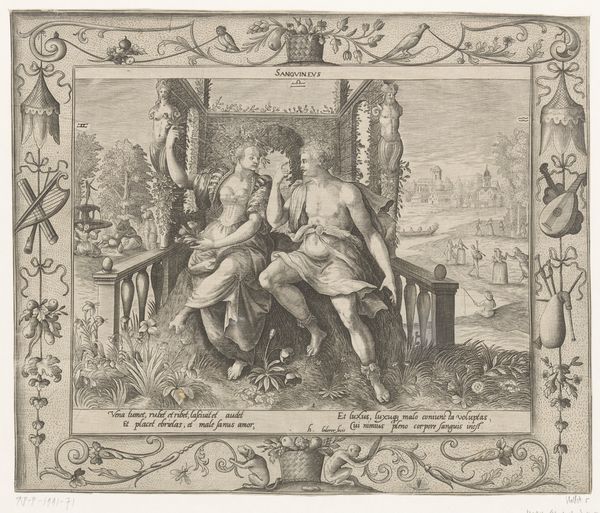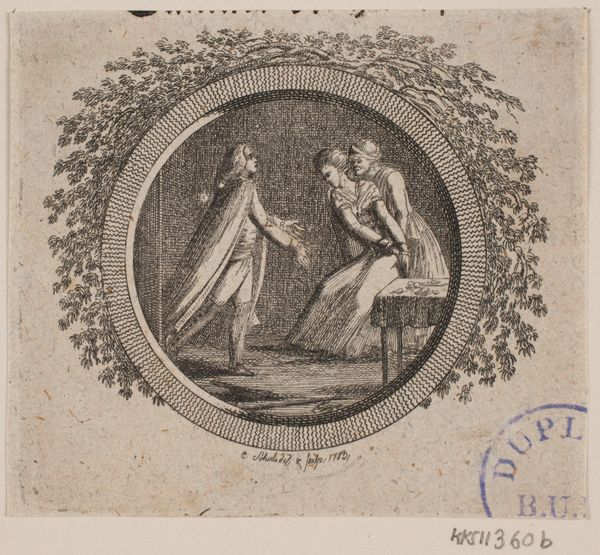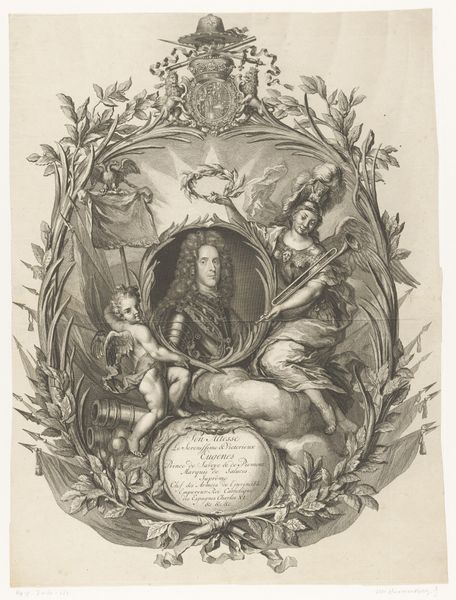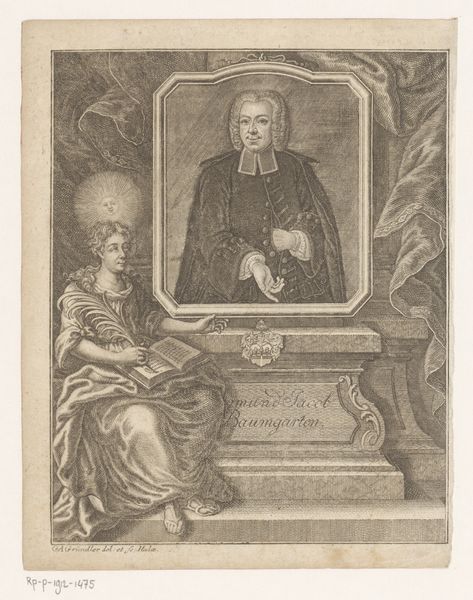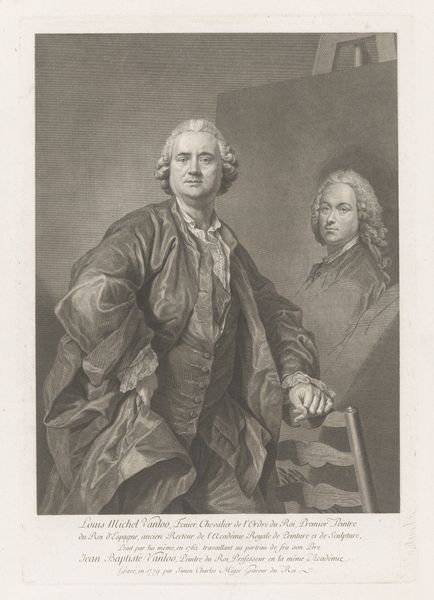
drawing, print, engraving
#
portrait
#
drawing
#
baroque
# print
#
history-painting
#
engraving
Dimensions: Plate: 10 11/16 × 16 7/8 in. (27.2 × 42.9 cm) Sheet: 15 1/8 × 21 3/8 in. (38.4 × 54.3 cm)
Copyright: Public Domain
Editor: This is a double portrait from 1735 titled "Portraits of Canaletto and Visentini," an engraving. The level of detail achieved using this technique is astonishing. What's particularly striking to me is how each portrait seems to capture something essential about each man's character. What do you see when you look at this image? Curator: I see a fascinating intersection of art, commerce, and intellectual exchange in 18th-century Venice. This print wasn't just a representation of two artists; it was a strategic statement about their roles in shaping the Venetian image for a European audience. Consider how the elaborate frame and allegorical elements elevate these figures, placing them within a classical, almost heroic context. Who benefits from this glorification? Editor: Well, both artists certainly benefit from having their reputations enhanced. Canaletto was renowned for his views of Venice. Visentini, from my understanding, was an architect and engraver. How does that influence your interpretation? Curator: Precisely. Visentini disseminated Canaletto's vision through prints like these. This collaborative reproduction allowed the city's imagery to circulate, impacting not just artistic tastes but also travel and tourism trends of the era. We should ask ourselves how the representation of these men through visual media serves a very particular social and political agenda. Were they consciously marketing Venice and themselves to specific European power structures, thereby influencing perception and potentially wealth distribution? Editor: So it’s about controlling the narrative and benefiting from the associated influence? Curator: In a sense, yes. This portrait isn't merely an image; it's a document of cultural production and social power at play in 18th-century Venice, reflecting and perpetuating ideas about nationhood, artistry, and trade. Thinking about whose stories are being told here, and through whose lens, gives us a rich insight into that period. Editor: That definitely provides a new, critical framework for understanding this seemingly simple portrait. Thanks for broadening my perspective. Curator: My pleasure! Looking beneath the surface of the aesthetic to unearth the layered social commentary is key to really unlocking these works.
Comments
No comments
Be the first to comment and join the conversation on the ultimate creative platform.

